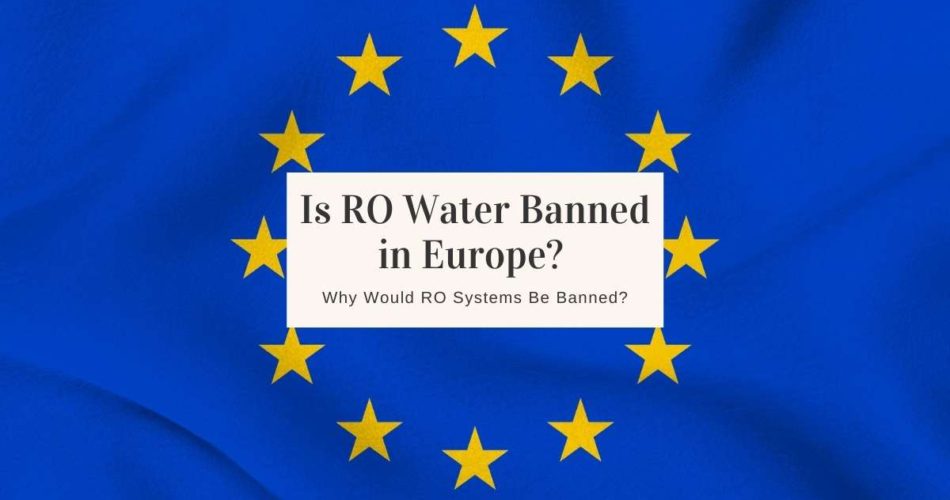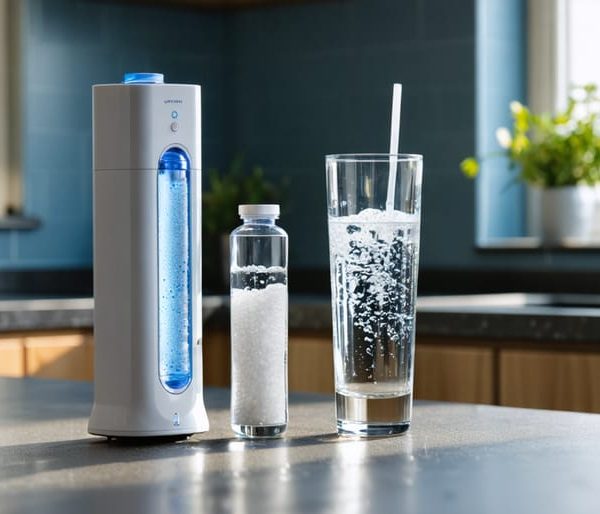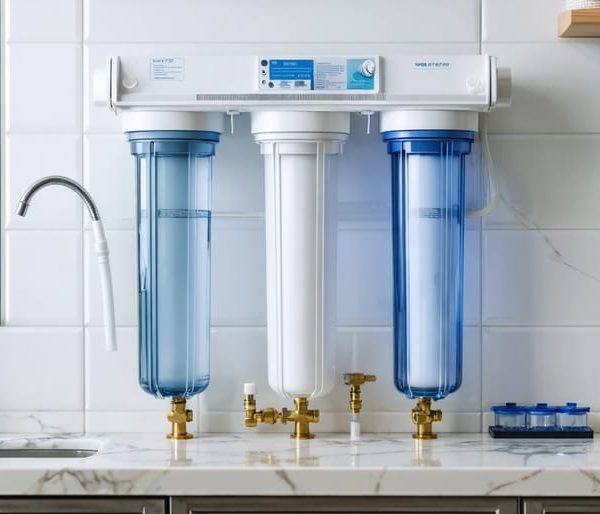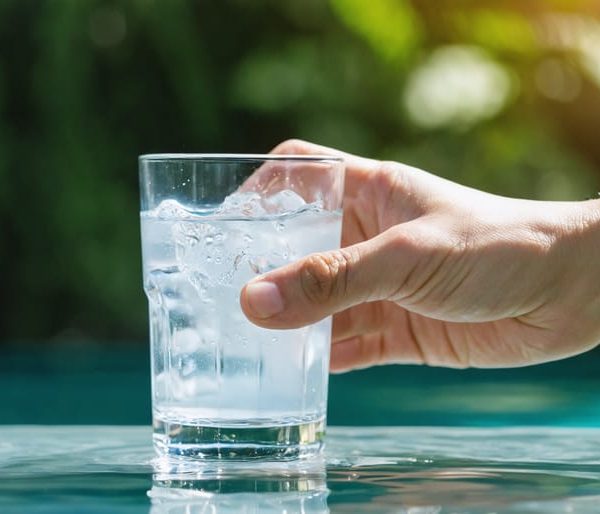There are claims of RO filters being banned in some countries, but most of these claims are just rumors. RO water is not banned in Europe. However, installing reverse osmosis systems will most likely be banned in New Delhi, the capital of India. According to an article in The Hindu, National Green Tribunal asked the governments to ban RO systems due to low TDS (less than 500 mg/L) of water.
Why Would RO Systems Be Banned?
The RO system is one of the most effective water purifiers out there, and even the World Health Organization deems drinking reverse osmosis water as a healthy practice.
So what’s the point of banning RO water purifiers? Well, there are some reasons why RO water could be banned in Europe or other countries:
RO Water Purifier Is Wasteful
Reverse osmosis water systems waste so much water in the production of clean drinking water. RO water filter purifiers use roughly 4 gallons of water to produce a single gallon of RO water; that’s 3 gallons of wastewater down the drain.
However, this comes down to an issue of perception. After all, taking your bath will also result in a lot of wastewater if we follow that logic. This also applies to operating household appliances such as dishwashers and even your laundry machine because they all produce wastewater. Yet, none of these systems are water purifiers.
Still, wastewater from RO water purifiers is not entirely wasted because we can recycle it. This wastewater may contain a significant TDS concentration, but it will be clean to an extent. It has passed through some filtration phases in the reverse osmosis water purifier before getting to the RO membrane.
Another reason why we can recycle this wastewater is that no chemicals were added during the RO water purification process. So you can channel what others perceive as wastewater to another tank to recycle it.
There are different reverse osmosis water systems, with some less wasteful than others. So we advise that you do your research when in the market for a reverse osmosis water purifier. Buy a modern reverse osmosis system that’s efficient with water to reduce the amount of wastewater.
Another tip to reduce water wastage is timely replacements of the reverse osmosis membrane. The expected lifespan of the reverse osmosis membrane will be stated in the usage instructions.
Demineralized Water
There is a popular belief that RO water contains no dissolved minerals and that drinking RO water gives no benefits to both animal and human organisms. RO filters have an extensive filtration range, including chemical contaminants and minerals, but they don’t remove all the minerals in your drinking water.
Demineralized water is a product of ion exchange which involves an anion and a cation, drawing out positive and negative mineral ions from your tap water supply. The ion exchange resin traps these total dissolved solids, so the RO filter can’t take them out.
Distillation is another process of producing demineralized water. It involves boiling seawater or groundwater and trapping the vapor, which will cool down to form demineralized water.
Such water has several useful applications. For example, you can use distilled water for your car batteries and vehicle cooling systems. This type of water is ideal for these applications because it doesn’t contain minerals that can accumulate on surfaces, causing blockages.
However, we strongly advise against drinking demineralized water because of the adverse health effects associated with the consumption of this water. Drinking water produced by demineralization comes with adverse health effects, including motor neuronal disease, certain types of cancer, death in infants, preeclampsia, etc.
On the flip side, you can drink RO water because it doesn’t remove the essential minerals in drinking water. Only two methods can completely remove mineral ions from your water; distillation and ion exchange.
Cost
The expense that comes with osmosis systems is high. If you reside in the city and you’re connected to the city’s water system, your tap water supply is likely to fit enough for drinking. For this category of people, justifying the presence of an RO water system may be futile.
However, if you’re skeptical of your freshwater quality, you can opt for packaged drinking water. There are cases where your tap water quality is suitable enough for drinking, but it could get contaminated as soon as it enters your plumbing system. Bottled water is a safer option, but it may cost you more in the long run.
On the flip side, RO water consumption may cost you much upfront, but it will prove cheaper in the long run. The system is low-maintenance and saves you the cost of buying bottled water regularly.
RO unit also offers you value because its water is 99.9% free of water impurities. There are also instances where your RO system is tax-deductible, saving you a lot of bucks in the long run.
pH
Is reverse osmosis water acidic? Yes, but slightly.
Neutral pH ranges from 7 to 7.5. Purified water from your RO system has a pH range of 6-6.5, which puts it on the acidic side of a water pH scale. This isn’t a big deal, as some claim, because most of the liquids we consume even have lower pH levels than RO water.
Ironically, we consume these things every day. Liquids such as coffee, fruit juices, carbonated drinks, and tea have a lower pH level than filtered water. So while filtered water is more acidic than untreated water, it’s very suitable for human consumption. According to the Environmental Protection Agency, water with a pH range of 6.5 to 8.5 is safe for human health.
To Sum Up
Most of the RO water system claims are widespread myths with no factual basis. Understanding the reverse osmosis process is crucial to knowing the benefits and drawbacks of the RO water system. Many people who consume mineral water frown at the consumption of RO water, and believe the water doesn’t contain the essential salts needed. Having debunked these myths, we recommend using the reverse osmosis system.



